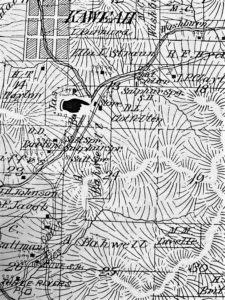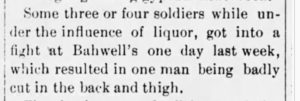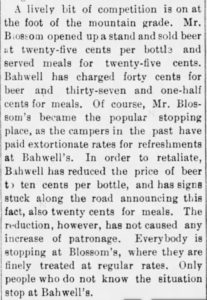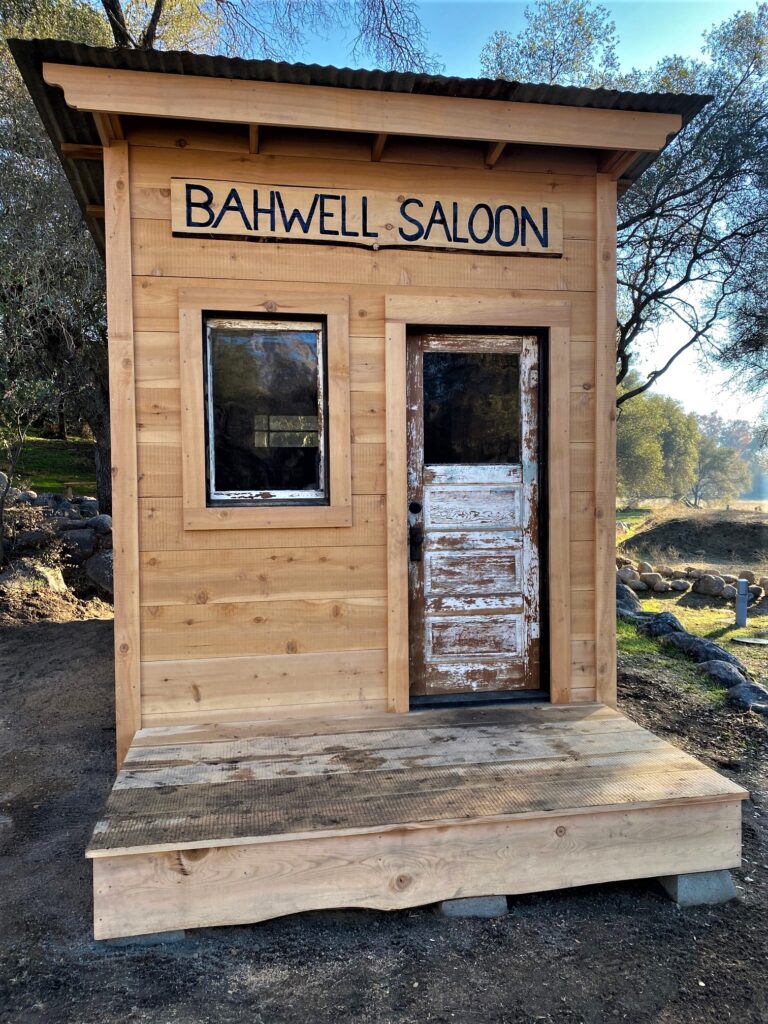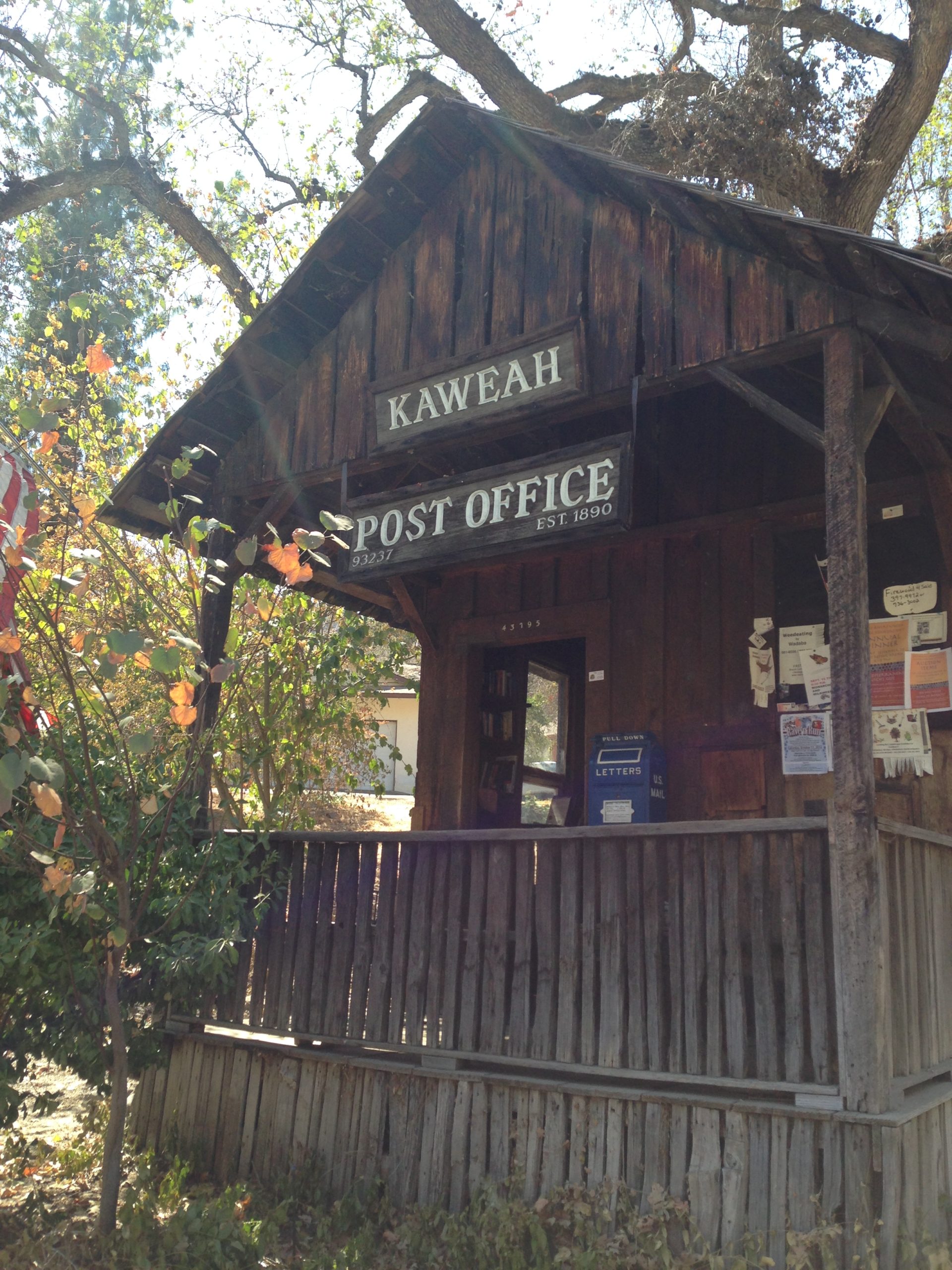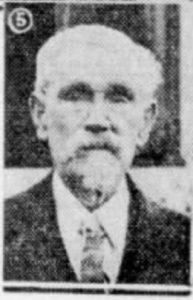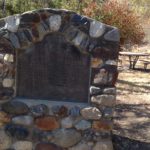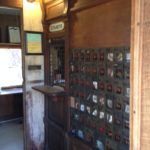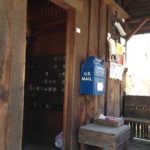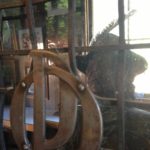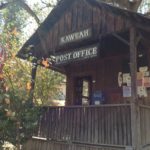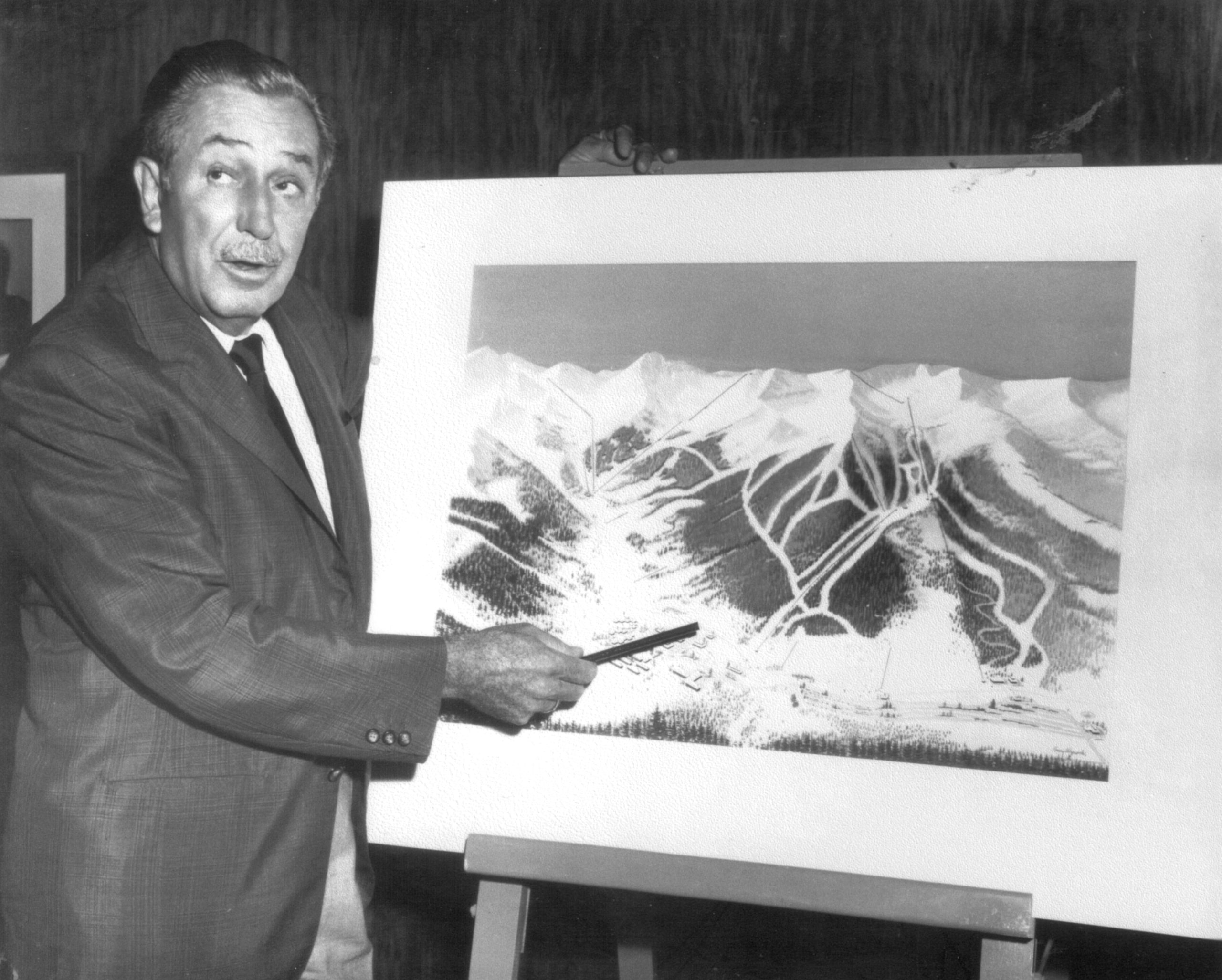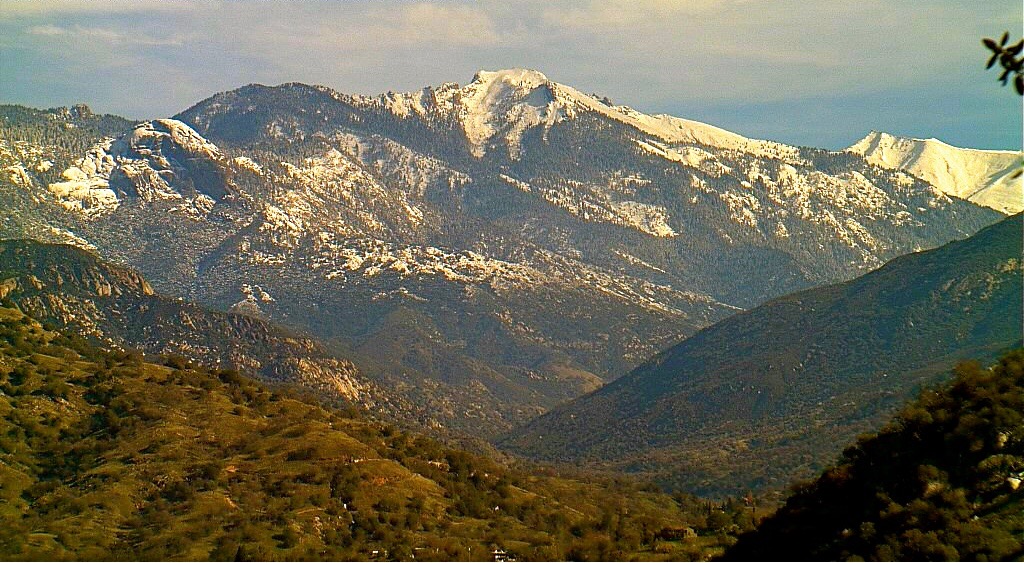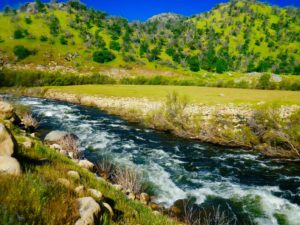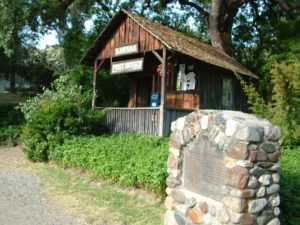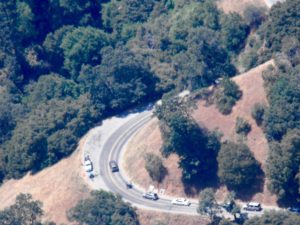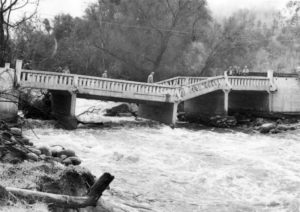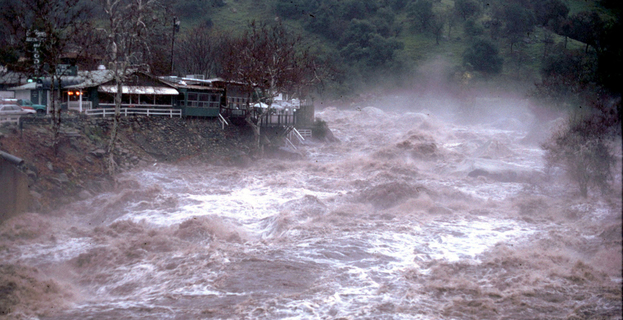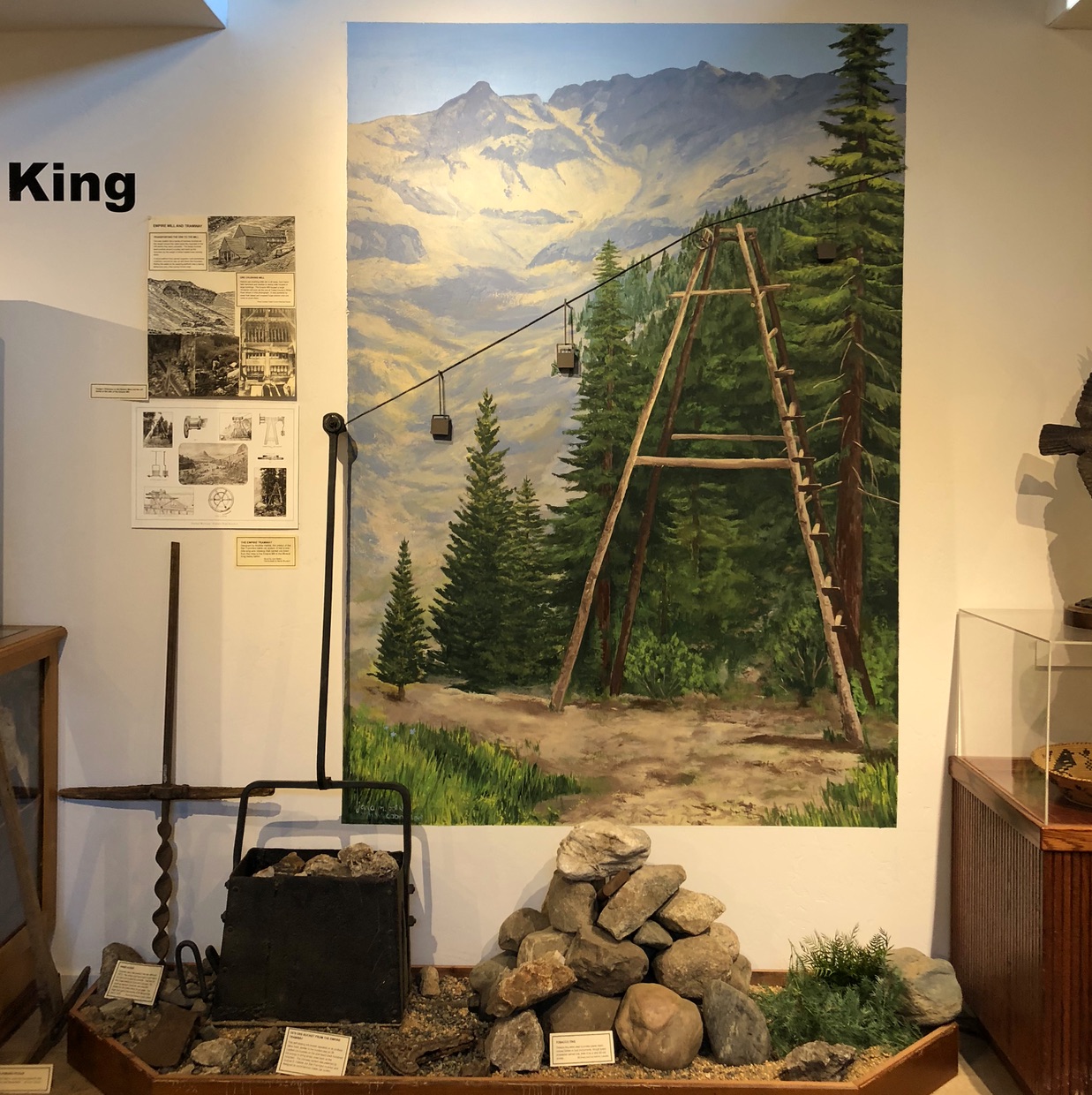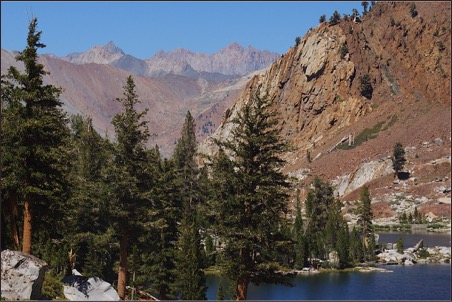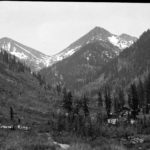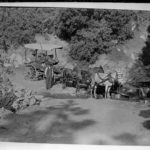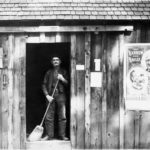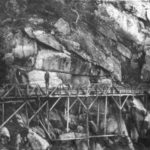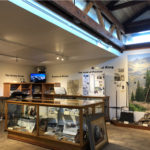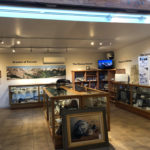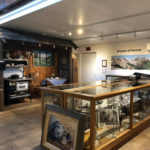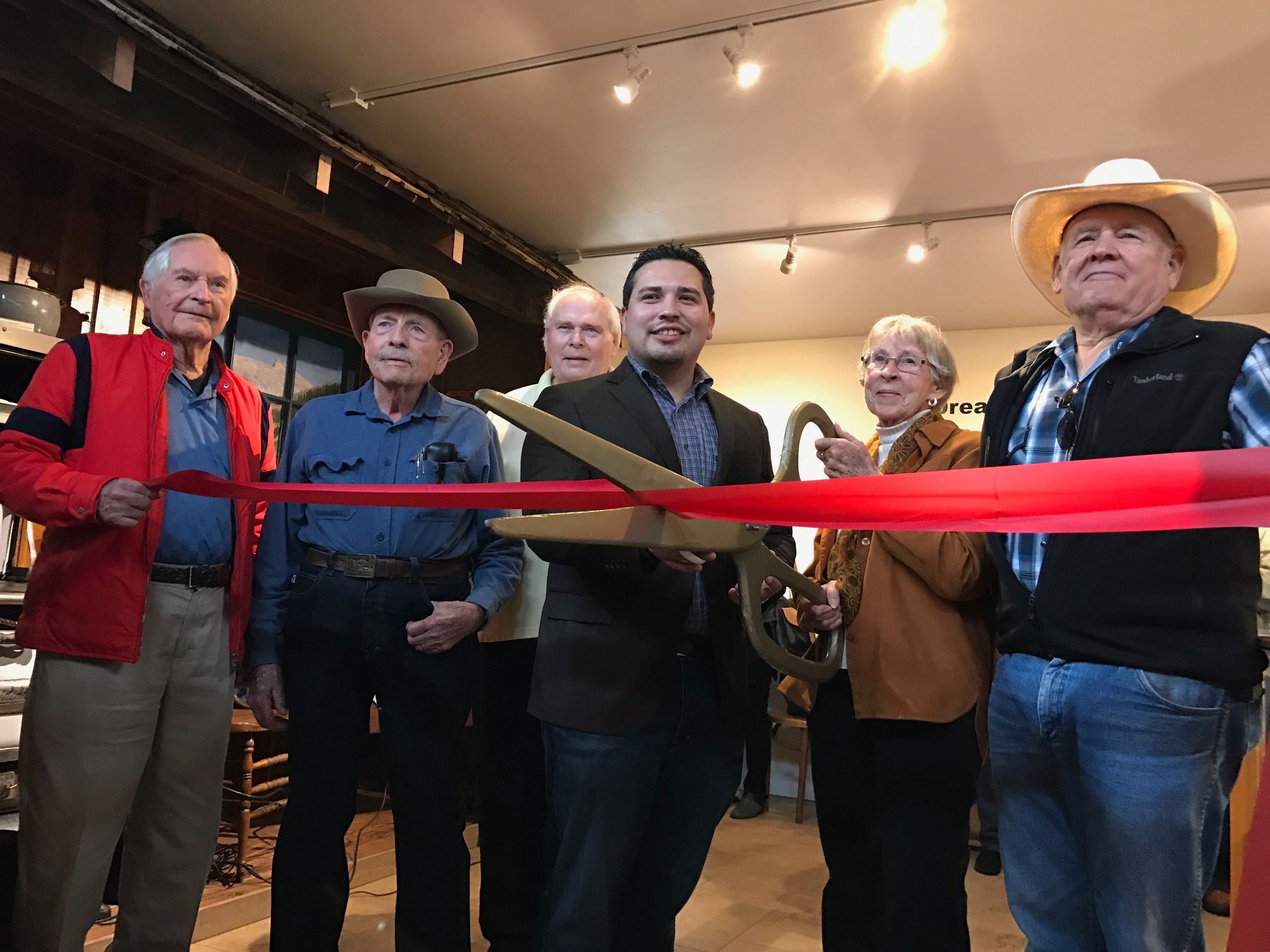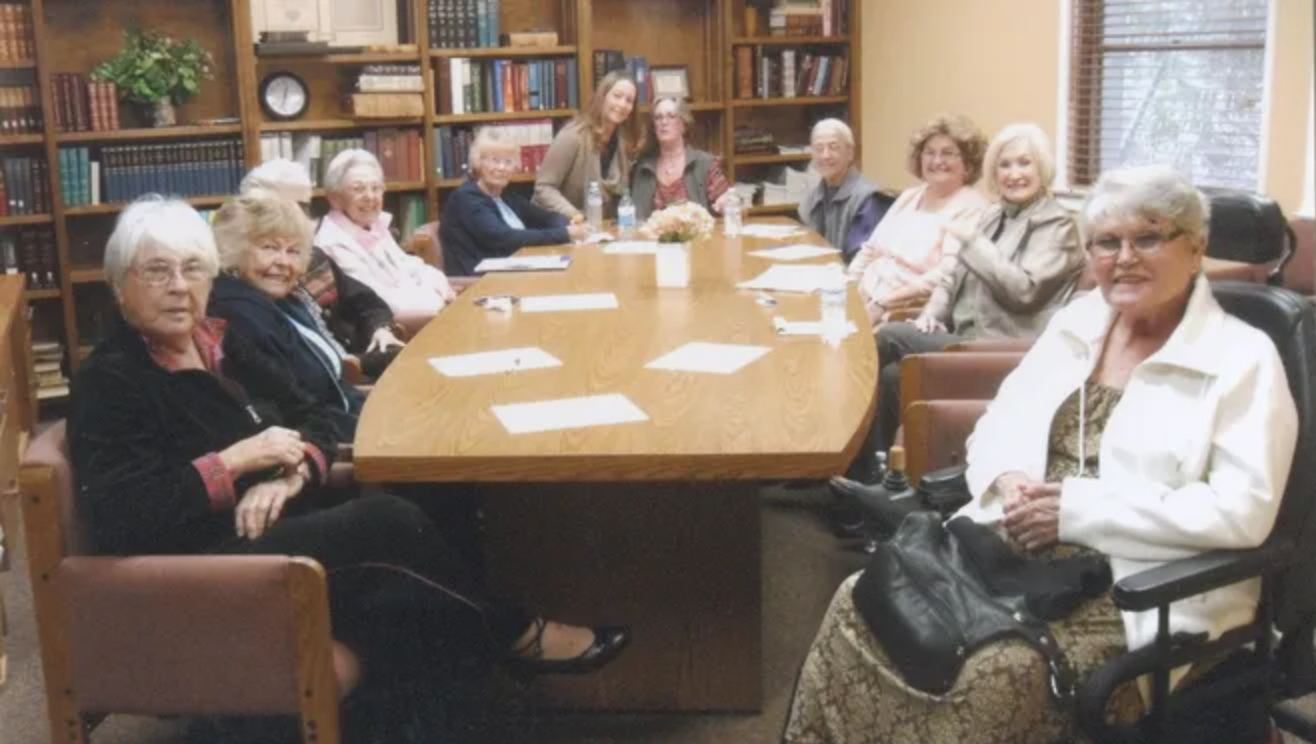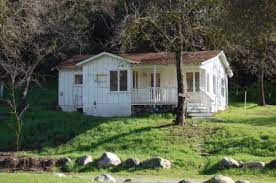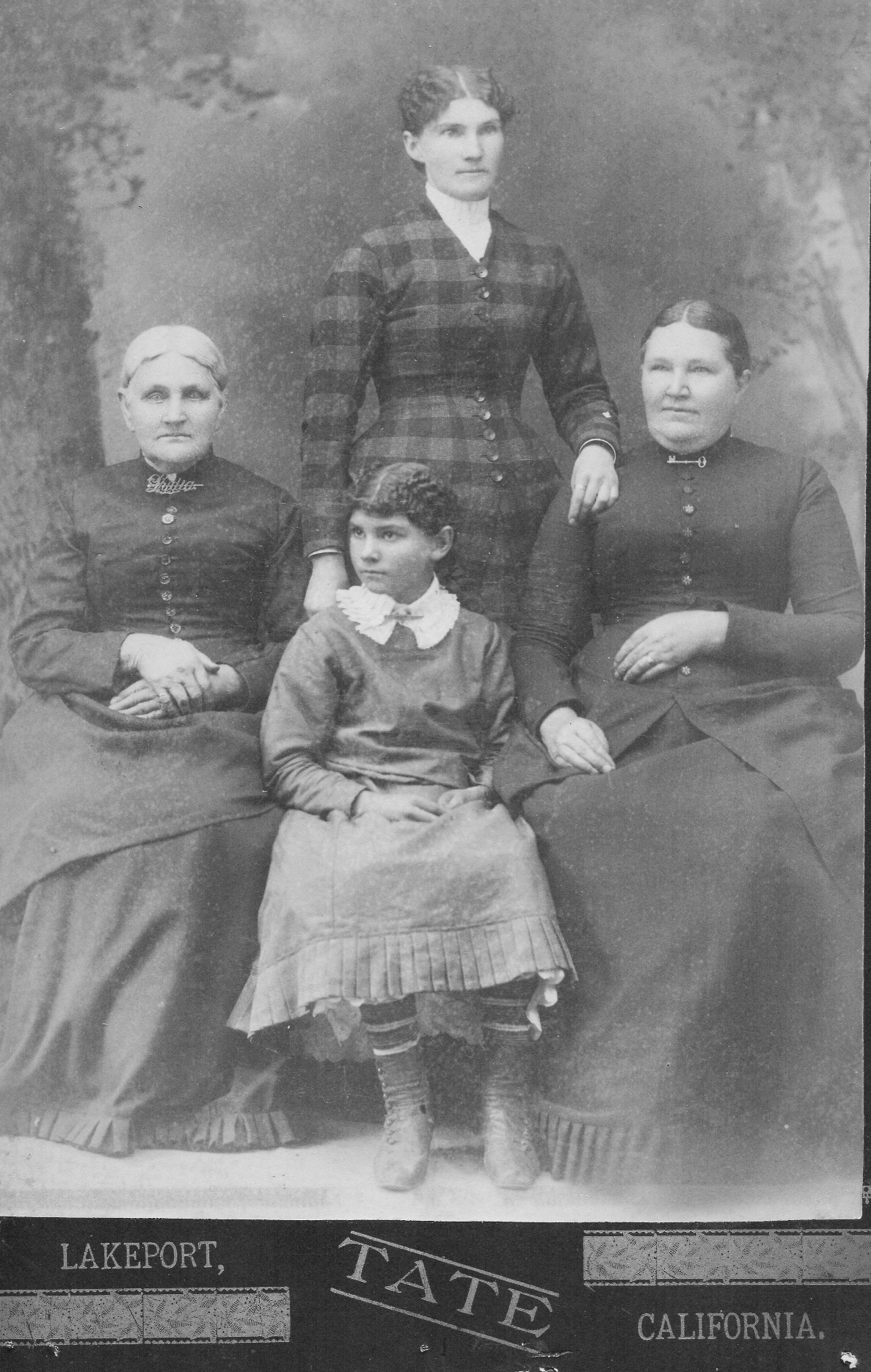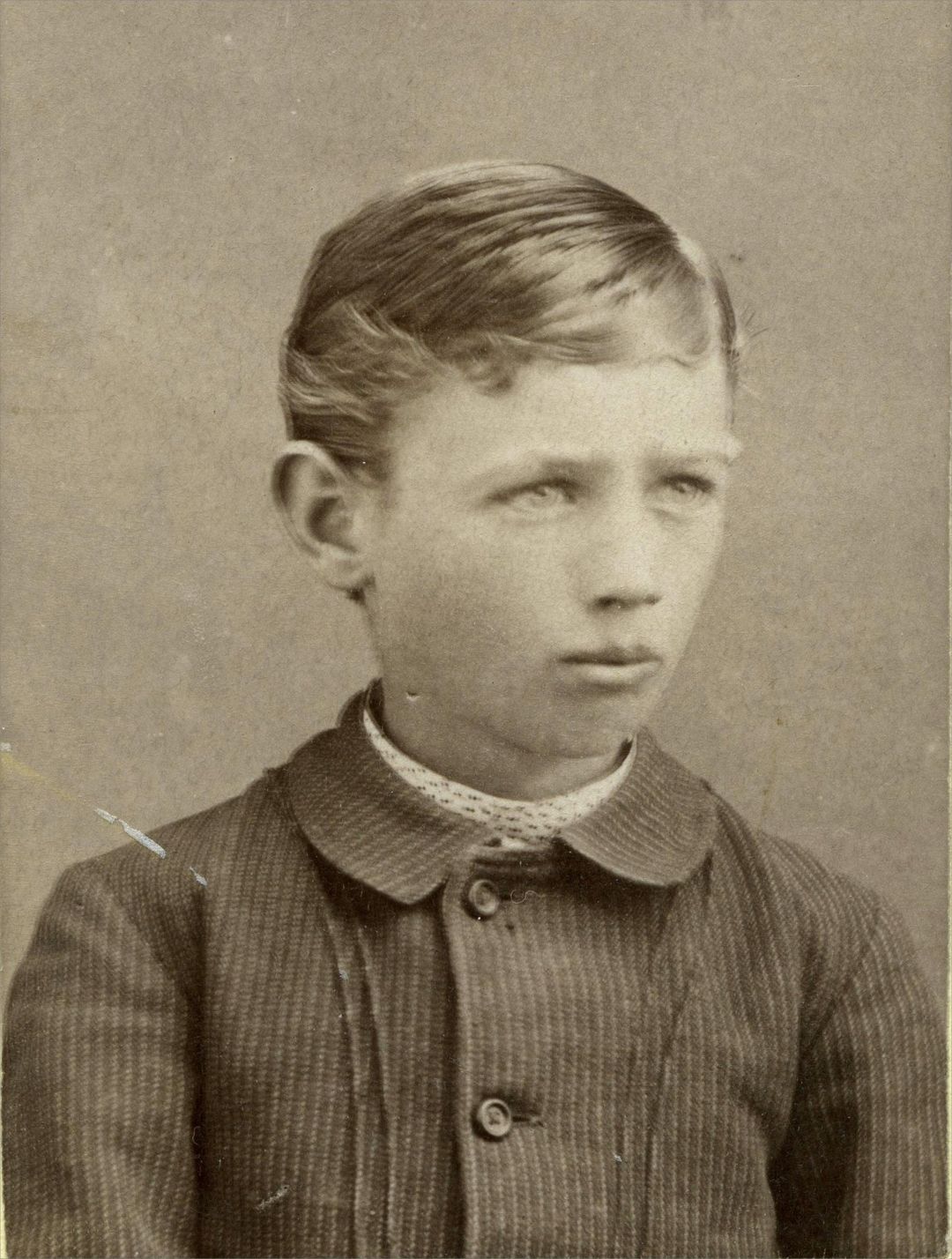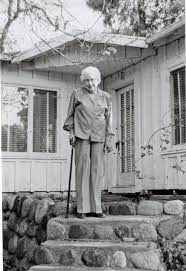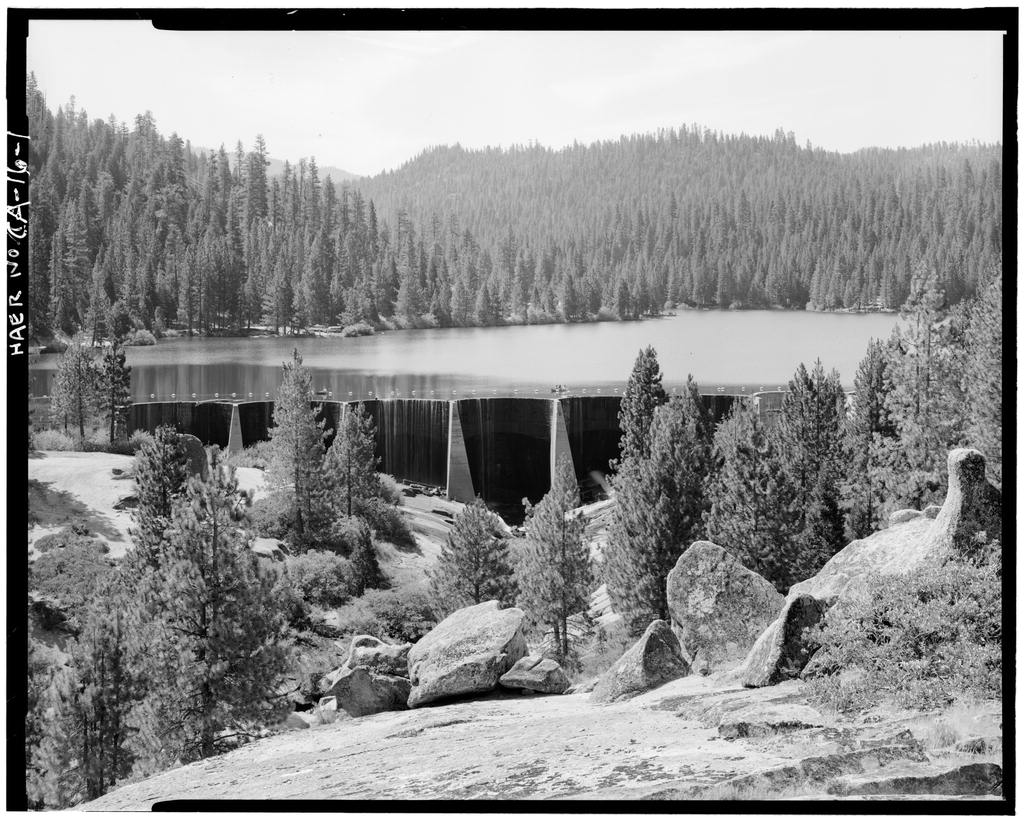By Jay O’Connell for The Kaweah Commonwealth, July 2014
PART ONE
When Irvin Barnard joined the Kaweah Colony, the struggling co-operative endeavor gained one very important asset. Comrade Barnard had considerable capital and was able to purchase a 240-acre tract of land at the lower end of the North Fork canyon for $2,000. After the period of road building, with tent settlements at Advance and elsewhere up canyon, the move marked the final phase in one of the most colorful chapters in California’s history: the Kaweah Colony.
One poetically inclined colonist described the area of this new Kaweah Colony townsite:
The canyon broadens here—
with calm incline
The hills up-billow
from the oak clad plain;
The river ripples blithely
over stones
Or rolls thru pools with
soothing undertows.
But don’t get me started on the Kaweah Colony. The last time I started writing about those old-timey North Fork hippies, it resulted in over 100 columns for this newspaper. I don’t think anyone is prepared for something so long-winded ever again.
In recent years, I have repeatedly promised (or threatened, depending on your point of view) to start submitting articles to the Commonwealth again. Now I have come upon a subject that is part western legacy, part present-day show-stopper, and part future and continuing asset for the community.
Amazingly, they recently relocated right here to the lower North Fork, where “the canyon broadens with calm incline” and “the hills up-billow from the oak clad plain.” But the sounds of the “river rippling blithely over stones” are now complemented by the thundering hooves of horses and the excited voices of adventurous young girls.
When I learned that the world-famous Riata Ranch Cowboy Girls are now based in Three Rivers, at a property that I have written about on more than one occasion, I decided I had to learn more.
* * *
It was while having a beer at the Gateway that I fell into conversation with a congenial fellow one barstool over. He wore a cowboy hat and had a voice like a rodeo announcer.
We got to talking about the Chilcott place up past the Roping Arena and its connection to the Kaweah Colony. I explained that it was the location of the Kaweah Townsite during the last days of the colony, and later was owned by the Redstone and Hopping families, who were prominent members of the failed co-operative endeavor.
I mentioned that the Hopping brothers ran a stagecoach to Sequoia National Park during those early days when the Colony Mill Road was still the only road into the park.
It was about then that I had to confess (okay, brag) that when it came to questions about the Kaweah Colony, he was talking to the right person. I had actually written a book on the subject.
There is no way this didn’t sound like a blatant boast. Just like now, I suppose.
But it’s key to the story, so I include it, even if it makes me look like a bit of an ass. Chad Nicholson (by now I knew my barstool companion’s name, and he actually is a rodeo announcer) explained that his wife ran the Riata Ranch, which had recently relocated to the Chilcott property.
The world-famous Riata Ranch now in Three Rivers? Color me impressed.
And, yes, of course I’d heard of them. I’m not a total city boy. I’ve been to a rodeo or two. Or at least the Woodlake Rodeo more than once.
I have also previously written about the Chilcott’s Redstone Ranch. The former site of the Kaweah Colony was later owned by Dr. Forest Grunigen (a Hopping descendant) who sold the property to Bob and Janine Chilcott in the 1980s.
With an appreciation for local history, they named it “Redstone Ranch” and for many years raised Percheron horses on the property.
For several years, the Chilcotts hosted Woodlake High School-Class of 1924 reunions with Dr. Grunigen and several of his classmates. I was fortunate to attend one of the last of these reunions in 1999 and featured an account of it in a biography of Dr. Grunigen that I co-authored.
And my experience with two more things qualifies and motivates me to write about Riata Ranch. Horses and show business. Make that three things. Horses, show business, and pretty young women.
I have fond memories of helping bring horse and actress (portraying Eva Evans, the “Train Robber’s Daughter”) together on stage at the Fox Theatre in Visalia. And how many sitcom producers get to work with a horse as talented as Gunner and actresses as lovely as Kat and Beth?
And so it wasn’t long before I contacted Jennifer Welch Nicholson, Chad’s wife and the executive director of Riata Ranch International. At the time of this writing, I have already spent a couple Saturdays at the former Redstone Ranch, watching Jennifer work with the young girls and talking with her about the past, present, and future of the Riata Ranch.
I plan to spend a lot more time at the ranch and with the performing Cowboy Girls on tour later this year. And if you haven’t gathered by now, I am destined to write a multipart series on the Riata Ranch for The Kaweah Commonwealth.
In coming installments, I’ll look back at the history of the Riata Ranch Cowboy Girls, all the way back to its founding in 1957 by the late Tom Maier. I’ll profile the talented performers and their spectacular trick riding and roping and take readers behind the scenes.
I’ll highlight the training of young girls and the wonderful life lessons they learn at Riata. I’ll trace the path Riata took to Three Rivers and how their relocation came to be.
And finally, I’ll look at the future goals and plans for Riata as, from here forward, it becomes a Three Rivers institution.
PART TWO
In a way, the story of the Riata Ranch started when 12-year-old Tommy Maier left his North Dakota home and landed in Hollywood. As the Los Angeles Times recounted in a 1985 profile, “There he got a job… training horses for movie stars until he could support himself bulldogging and roping calves on the rodeo circuit. When a car accident ended his ability to compete, he found his way to Exeter… where in 1956 he started a riding school for children.”
Riata founder’s road to Exeter
As a stunt rider during those early Hollywood days, Tom worked with Ronald Reagan in Stallion Road and doubled many actresses, including Elizabeth Taylor, Betty Hutton, and Jennifer Jones. It was a prescient way to earn a living — dressing in women’s costumes and riding horses — for the man who later became the founder of a famous troupe of trick-riding girls.
But those first years in Exeter, with his riding school enrollment blossoming, the curriculum had little to do with trick riding. Classes covered various levels of ability in Western and English riding, rodeo disciplines and, as always, a variety of chores and horse care.
The Riata code
Tom Maier was a strict and demanding teacher. To call him gruff or “old school” was an understatement. But his high expectations and demand created a way for young people to be successful.
The importance of chores and the philosophy that “every job counts and every action is noticed” became a defining foundation. Tom himself once described it as a “concept of young people learning life skills built on the Code of the West.”
Throughout the 1960s and early ‘70s, Tom Maier’s Riata Ranch continued honing its horse show “Special Classes” until, by the mid 1970s, it was well-known as one of the most competitive and winningest horse show barns on the West Coast.
But Tom always had unique things going on at Riata as well. He might have the students riding steers, or filming old-timey movies, or even working with and riding wild or exotic animals.
Eventually Tom introduced yet another pursuit: a gymnastics program emphasizing physical fitness. By now, Riata was concentrating increasingly on girls, and Tom felt there were few other sports opportunities available to them. The gymnastics training soon evolved, progressing from vaults on a stationary horse to trick riding feats on galloping ones.
Evolution of trick riding
Trick riding was nothing new to American rodeo, and indeed has a long and interesting history. It has roots as far back as the Roman Empire, where riders rode standing atop a pair of horses, and the Russian Cossacks, who used their unique style of riding in battle.
Watch a trick rider today perform the Cossack Drag (also called the Suicide Drag), and you can see how Cossack horsemen were nearly unconquerable. When communism overtook Russia, many Cossacks moved to America and used their riding talents to make money. As entertainment, it caught on.
Not always just an entertainment act, up until the 1930s trick riding was a standard competition at American rodeos. With the hardest tricks earning the most points, the competition eventually became so dangerous it was deemed too risky and was relegated to an entertainment act and the sport began to die out.
Girls just wanna have fun
Additionally, women’s place in rodeo has a long and sometimes controversial legacy. In 1903, women began competing at the Cheyenne (Wyo.) Frontier Days.
By 1920, women were participating as relay racers, trick riders, and rough stock riders. In 1928, one third of all rodeos featured women’s competitive events.
But in 1929, Bonnie McCarroll was dragged to death by a horse and rodeo promoters severely curtailed women’s competitive participation, relegating them instead to serve as rodeo queens.
Some female rodeo competitors, like Mabel Strickland and Bonnie Gray, continued to compete in sponsored contests outside the rodeo mainstream (although even these competitions increasingly emphasized beauty and attire rather than athletic skill) and gave trick-riding exhibitions. Gray was one of the first performers to ride under the belly of her horse at full gallop.
Other women made names for themselves as trick riders. Faye Blackstone performed on the rodeo circuit during the 1940s and ’50s and rode in a traveling show with Gene Autry. Blackstone is credited with inventing the flyaway, the ballerina, and the reverse fender drag, wherein the rider hangs on the lower left side of the saddle while her head bobs by the horse’s haunches
Edith Happy began working rodeos as a trick rider in 1943 and spent more than two decades entertaining crowds with her famed Hippodrome Stand. She later became one of the first mentors to Tom’s new performance team, helping them with riding tricks and even making their flashy outfits. She had an incredible and lasting influence on Riata Ranch.
As Jennifer Welch Nicholson, current director of Riata Ranch and an original performer, remembers, “Tommy really started the performance team as kind of a sidebar to his riding school. It developed to provide entertainment along with the competition horse show and junior rodeo team.”
Riata talent diversified
The trick-riding team, initially comprised of four 13-year-old girls, made such a splash that a rodeo producer began booking them in the famous Flying U rodeo company. In 1977, they were featured in a special rodeo show for the Chrysler Corporation’s national convention in Reno. Their roaring success brought the promise of many more future engagements and tours.
Always on the lookout for a new challenges, and with the Cowboy Girls gaining notice, Tom had the girls form another new act: the Riata Ranch Cowboy Girl Band. With the same high standards applied to music as competing in horse shows, trick riding, or even raking a stall, Riata’s homegrown band was soon performing to rave reviews, everywhere from the Cow Palace (San Francisco) to Madison Square Garden (New York City) and ultimately international tours.
They are what they are
When that initial trick-riding team needed a name, Tom dubbed them the “Cowboy Girls.” Years later, a Los Angeles Times journalist called it “a horrible name.”
Maybe nascent political correctness prompted Tom’s opinion that calling anyone a girl sounded sexist. But they really were girls. And they certainly were cowboys. So what better name could there be?
And while I opened this article by quoting “My Heroes Have Always Been Cowboys,” I somewhat errantly attributed the lyrics to Willie Nelson. He merely (albeit wonderfully) sang the sentiment. It was actually written by a woman, Sharon Vaughn, who was once a little girl.
PART THREE
Emblazoned on the side of the gooseneck trailer that carries their horses are the words Riata Ranch International. It isn’t mere hyperbole. They have earned that name.
Since the first performance team received an invitation to perform in Europe in 1979, the Riata Ranch Cowboy Girls have performed in 18 countries on four continents. And beyond taking their talents to the four corners of the globe, Riata Ranch has attracted riding talent from all over the world, bringing international riders to rodeos and equestrian events right here in the United States for decades.
As the Los Angeles Times reported in 1985, when it comes to the Riata Ranch Cowboy Girls, “We’re talking really big time: taking their trick and fancy riding and roping routines to Austria, Japan, Belgium where they performed before all the heads of state; also to Canada, England, France, Germany, Holland and Italy.”
The Riata Ranch Cowboy Girls represented the United States at the 1981 Equitana in Germany, ultimately earning the respect of initially doubtful European military representatives. During a tour of Japan that same year, they perhaps flirted with resentment when described as “Ninjas on horseback.”
As Janna Copley, a team performer at the time, recalls in the book Riata Ranch Cowboy Girls: Life Lessons Learned on the Back of a Horse, “Back then, the Japanese didn’t consider women self-sufficient. Yet here we were, young girls, doing all these daredevil stunts and being compared to legendary warriors! We were presented to the prince, and I’ll never forget the look on his face as I shook his hand. It was real admiration. He later became Japan’s emperor.”
They faced the challenge of performing at the 1999 Equitana Asia-Pacific in Australia on horses that were green to the demands and peculiarities of trick riding. Perhaps that contributed to the following episode, again from the above-mentioned book, which illustrates the mettle of these girls:
During the main performance, Kansas Carradine was doing a Backbend when her horse suddenly changed leads behind, smashing the cantle of the saddle into her face and breaking her nose. Reeling from the impact, Kansas nonetheless held on, completing the trick although blood was flowing.
“That Backbend was my next-to-last trick,” she recalls. “For the final trick, I was to carry the American and Australian flags in a Liberty Stand. The funny thing was no one realized I’d broken my nose because I had a flag in each hand and the audience couldn’t see my face. As soon as we rode out of the arena, I jumped off and ran to the bathroom. Tom [Maier, founder of Riata Ranch] kept the flag with all the blood on it.”
A true red badge of courage!
* * *
But for all their international appeal and experience, the Riata Ranch Cowboy Girls are uniquely and utterly American. In addition to all the top American rodeos — their tour every year takes them to rodeos far and near, from the Woodlake Rodeo to the Sioux Falls Round-Up in South Dakota; the Clovis Rodeo to the National Finals Rodeo in Las Vegas, just to name a few — the Riata Ranch Cowboy girls have also taken part in events as diverse as the Opening Ceremonies of the 1984 Olympics in Los Angeles, the Tournament of Roses Parade, and have proudly carried Old Glory down the track at world-famous Churchill Downs.
They performed to a standing ovation at the Oklahoma City’s National Cowboy Hall of Fame. They have even been touted in the Congressional Record as “unofficial ambassadors-on-horseback as they travel around the world providing entertainment and an outstanding demonstration of American equestrian skills.”
That reputation and fame, both in the U.S. and abroad, has helped Riata attract performers from all over the world. Over the years, they have supplemented their homegrown talent with performers from Australia, France, Germany, and Israel. That mix of local and international talent continues today, with this year’s performance team comprised of two young women from Canada, one from Australia, and three from the local area.
But, of course, touring the world and performing is only part of what makes Riata Ranch such an institution. The real work of Riata is what goes on day to day at the ranch. As the decades rolled by, that day-to-day work was sometime interrupted when its founder and guiding force faced serious health issues.
During the early years of the performance team’s tours, Tom Maier was diagnosed with stage 3 melanoma. The news was initially devastating to Riata, but surgery proved medically miraculous and Tom conquered that challenge.
In 1983, a freak accident while roping a bronc resulted in a traumatic head injury. During his recovery, the entire Riata organization pulled together to keep the ship sailing on course. Part of the Riata tradition is grounded in mentoring and peer education and support — the older more experience girls teach and guide the younger girls — and that tradition certainly served the program well during these times.
More health issues arose when a bout with diverticulitis landed Tom in the hospital for a month in 1994, and two years later he had quadruple bypass heart surgery. Through these difficulties, the Riata Ranch girls were always there for him.
As Tom once recalled, when he came home after his heart surgery, several of the girls were “waiting to help me up the stairs. So, you see, I’m rarely alone.”
One of the girls always there to help Tom was original performance team member Jennifer Welch. As a horse-crazy 10-yearold from Visalia, she started with Riata in the mid 1970s and became a superb rider, roper, and performer (even singing during the days of the Riata Ranch Cowboy Girl band).
Jennifer soon served as a team leader and eventually became Tom Maier’s partner and business manager. As Tom’s health declined and he was able to do less and less, she took on more and more responsibility until eventually running the entire operation.
When Tom Maier died in 2002, Jennifer was the logical and, indeed, the only choice to continue running the Riata Ranch.
In the next installment of this series, we’ll learn about the challenges Jennifer Welch Nicholson and the Riata Ranch faced in the years following Tom Maier’s death. We’ll see how these internationally famous Cowboy Girls searched for a much-needed permanent home.
They have been all over the world, they have performed for celebrities and heads of state. In 2012, they even took part in the Queen’s Diamond Jubilee Pageant at Windsor Castle where that once horse-crazy little girl from Visalia got to perform for and meet Queen Elizabeth.
And that long and winding road has led them to Three Rivers, where they have now settled.
PART FOUR
Back in the 1950s during the very early days of his riding school, Tom Maier purchased six acres of land near Exeter — at the end of Avenue 300 on the far side of the railroad tracks. For the next four decades, it became the home base for Tulare County’s spectacular ambassadors on horseback: the world-famous Riata Ranch Cowboy Girls.
In 1998, facing overwhelming medical bills, Tom took out a loan against the property, written on the Code of the West and sealed with only a handshake. But when the man he owed the mortgage to died, his family wanted to close out the estate, and the ranch went into foreclosure. Tom Maier drove off the property in 1998 for what he thought was the last time.
After a couple of years, the new owners of the property, having fielded so many inquiries about Riata, realized they had purchased much more than just a ranch, and invited Riata back home. As Brenda (Caskey) Sampietro, one of Tom’s first students, recalled in the above-cited book, “When I drove out to the end of Avenue 300 and crossed those familiar tracks, my heart sank. It was a mess… nothing had been done for two years. Tommy greeted me with ‘We’ve got to get it cleaned up.’”
With a lot of help from Riata members past and present, they got the place restored, and Tom Maier and the Riata Ranch were back. But now they were merely tenants. It wasn’t the same, and another major hardship was about to befall Riata. In 2002, Tom Maier passed away.
By the last years of Tom’s life, his health had deteriorated so much that although he was still making all the decisions and the success or failure of the operation rested on his shoulders, Jennifer Welch, his longtime assistant and one of the original members of the performance team, was virtually running the entire operation.
“For a long time people thought I was running Riata Ranch,” recalled Jennifer. “What they could see clearly, I couldn’t. Everyone could see that I would probably end up running Riata when he was gone. I never saw that.”
It wasn’t necessarily something Jennifer wanted. Even Tom had often advised her “to run and not keep Riata going.” He’d tell her how hard it would be and all the obstacles she’d face. “Just go on with your life,” he’d say.
But then once, toward the very end, he told her “if anyone could do it, she could.” By then, Riata Ranch was her life, and she couldn’t help but take hold of the reins.
“I realized there was nobody going to run it,” she said. “There was no money, and we needed to make some right now because there were bills to pay.”
With some big performance contracts looming, Jennifer thought she’d stick with it just long enough to fill the contracts, make some money, help Tom’s widow get situated, and then move on.
With resolve to give it “just a couple years,” and with some sound business advice from a friend, Jennifer took action. She incorporated and went after their 501(c)3 status. Riata Ranch became a nonprofit (and yes, one can make the joke that they had never really made a profit), formalizing a mission statement that had always been their credo.
Riata Ranch is dedicated to “enriching and enlightening young people by building positive life skills in a safe environment that in turn changes lives by allowing good kids to become great citizens.”
By the end of the summer, Riata had 22 students. Things started to look up. But without a permanent home, it was tough to build the program and recruit students and riders.
Although Riata was back at their original headquarters for the first couple of years after Tom’s death, they didn’t own the property. It was a little like selling a house and then renting a room.
They then moved the operation to a place in Farmersville, but only stayed there for a year or so. It just wasn’t the right fit.
They moved out to the former Jackson Ranch, home of the Woodlake Rodeo, for a few years.
“That was okay,” Jennifer explained. “But it’s a rodeo grounds and working ranch. No facilities, and they didn’t want to turn it into any kind of equestrian facility.”
Then they moved to another ranch property in Exeter, but again they were only renting and had to share facilities with other tenants. For more than a decade, Riata Ranch was without their own true home base on which to build a program and expand operations.
By this time, Jennifer and her husband, rodeo announcer Chad Nicholson, were living in Three Rivers. People up here kept telling her she had to talk to Janine Chilcott.
Jennifer knew the place, the Redstone Ranch, where Janine and her late husband, Robert Chilcott, had raised Percheron horses. It is a magnificent property with a storied history (detailed in the first installment of this series). But it seemed out of reach of Riata’s modest resources.
Hoping to perhaps just lease some land for their horses, Jennifer finally set up a meeting with Janine.
“I didn’t even really know what I was asking for,” she said.
By the end of the meeting, Janine had laid out a whole plan.
“I looked at Chad, and I looked at her, and I said ‘Okay, we’re going to move here!’”
They jumped in with both feet.The ranch has turned out to be a perfect fit.
The facilities are ideal for the great work that Riata does. The property that was once the base of utopian dreamers in the 19th century is now the training grounds for little girls with dreams of being trick-riding and roping performers.
The ranch with the historic name honoring a pioneer Kaweah Colony family (1890s) — the Redstones — where stately draft horses flourished (1990s), is now a ranch with a much-honored name — Riata.
And now, and for generations to come, when those horses and girls perform at rodeos around the country, announcers will proclaim, “Ladies and gentlemen, from Three Rivers, California, the world-famous Riata Ranch Cowboy Girls!”
Now that deserves a standing ovation.

